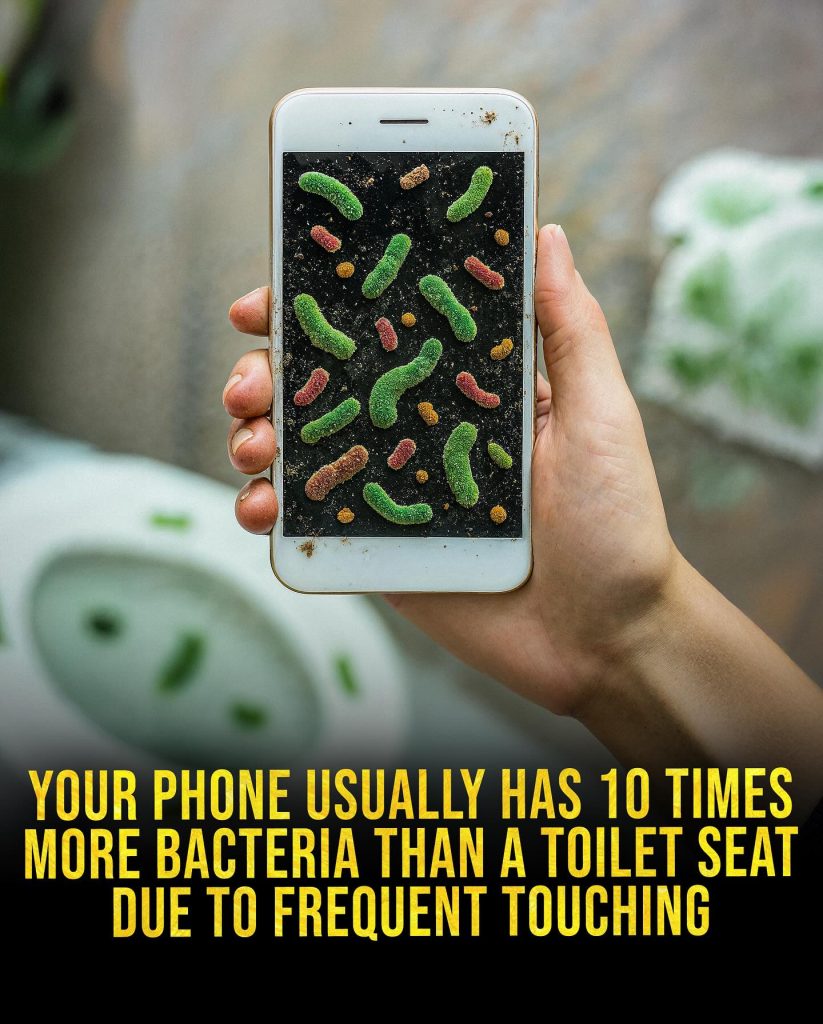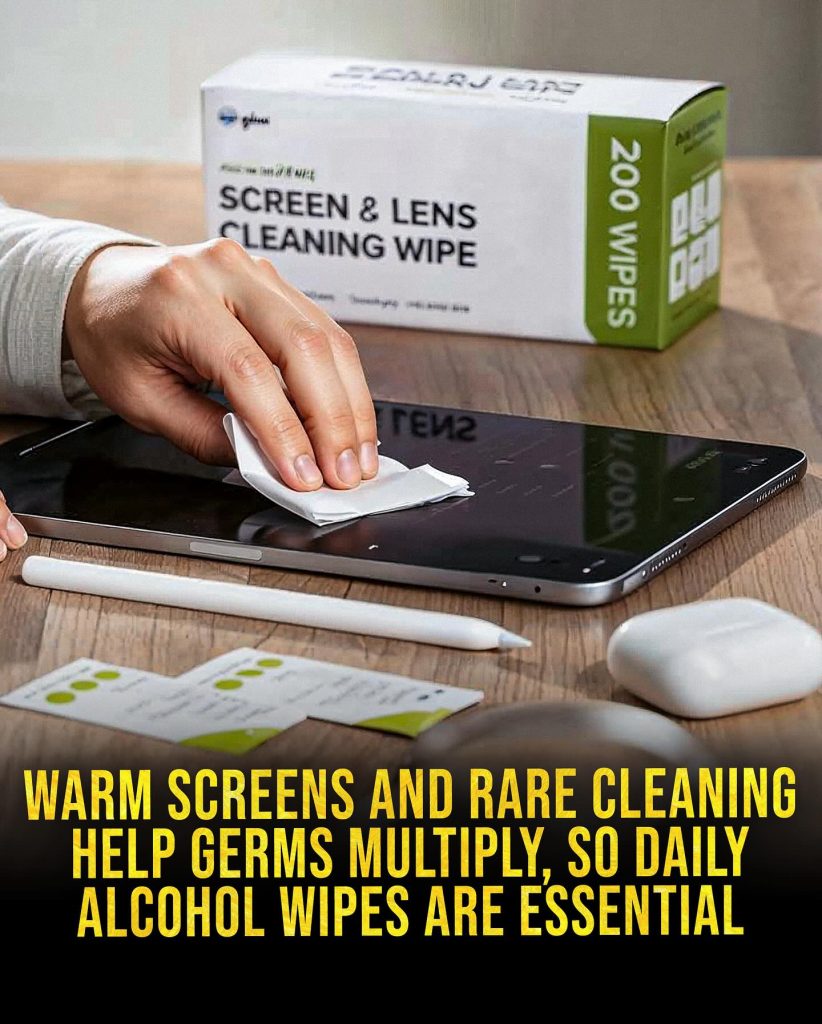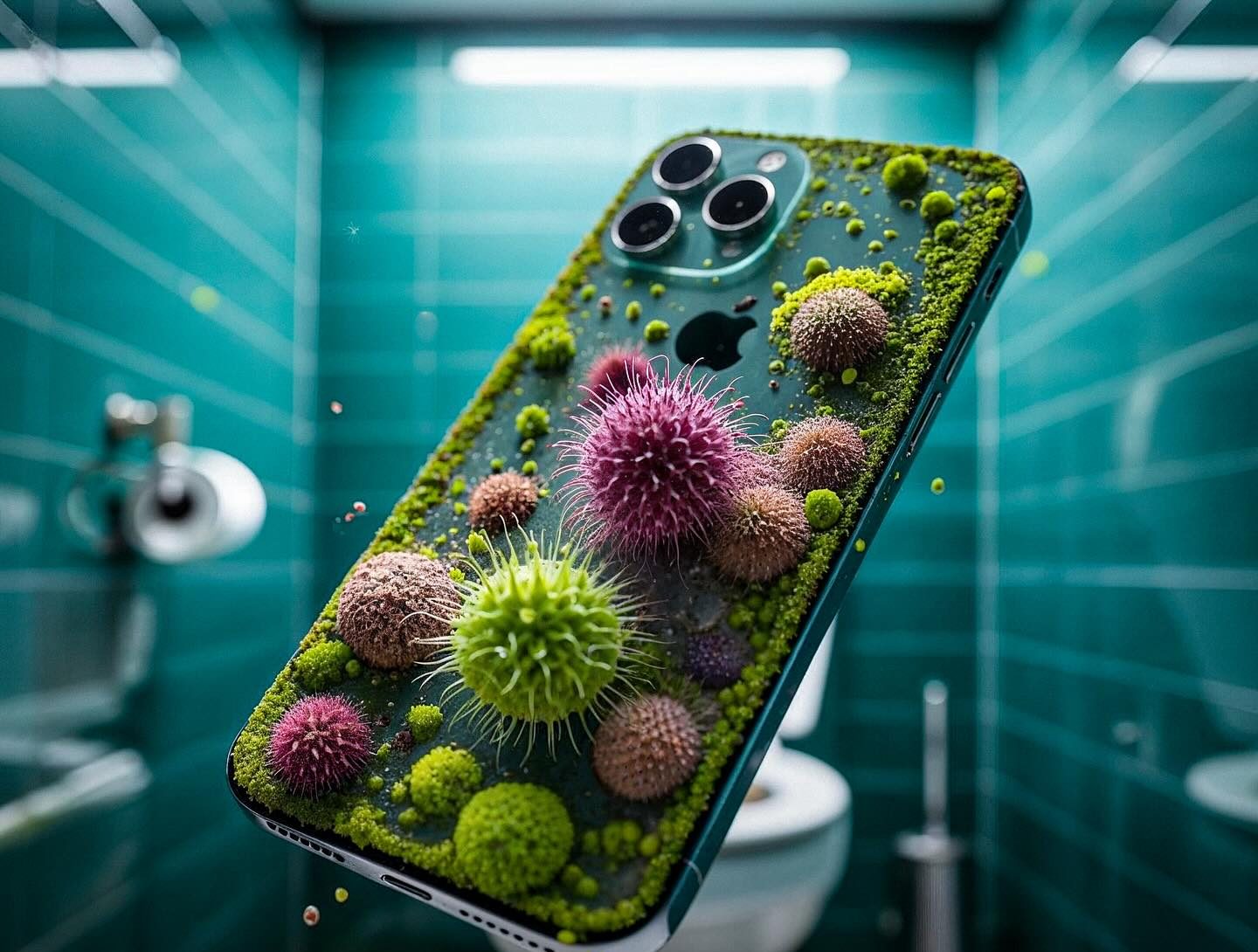YOUR PHONE HAS 10 TIMES MORE GERMS THAN A TOILET SEAT
I learned the hard way that my phone was not just a screen and a camera and a lifeline to the world—it was also a traveling ecosystem. It happened on a routine morning at my coffee shop, the sort of day when everything feels automatic. I grabbed the door handle, balanced my phone on the counter while I fumbled for my wallet, tapped in a PIN, took a sip, and then, without thinking, pressed the warm glass against my cheek to answer a call. Later, after noticing the streaks along the edges of the case and a smudge that felt almost sticky, I looked up what actually lives on a phone. That’s when I fell into a rabbit hole of research that included lab swabs, culture plates, and a headline-grabbing stat repeated by universities and public-health researchers: our phones can carry far more bacteria than a toilet seat—often cited as up to ten times more. The number is startling, but the reasons are simple. We touch our phones constantly, the surfaces are warm, and unlike toilet seats, no one disinfects their phone as part of a daily routine.
Your Phone Has 10 Times More Germs Than a Toilet Seat

Once you hear that comparison, you can’t un-hear it. The shock comes from how normal a toilet seat is to clean. Bathrooms get scrubbed with intention. Public restrooms are disinfected on a schedule. At home, we wipe down the porcelain without thinking. Phones, by contrast, are treated like jewelry. We polish them for fingerprints but rarely sanitize them for germs. That hot pocket of air your device makes near your face isn’t just heat from the processor—it’s a cozy climate for microbes. Researchers who swabbed phones in offices, schools, hospitals, and homes consistently found them brimming with bacteria transferred from hands and the environment. It isn’t just one species, either. The mix depends on where you’ve been, what you’ve touched, and whether you keep your phone in a case that traps moisture and oils.
It helps to remember why a toilet seat can test “cleaner.” A seat is a cool, hard surface that’s frequently disinfected and not touched for hours on end. Your phone is the opposite. It is warm because of the battery and screen, coated in natural skin oils that act like a thin film, and handled hundreds of times a day. Think about the loop we build: we wash our hands, then immediately touch a screen and case that haven’t been cleaned, and whatever is on the phone rides right back to the skin. The average person reaches for their phone dozens, even hundreds, of times a day. Every lift is a chance for a microscopic handoff. If you’ve ever set your phone down on a café table or a gym bench or a bus seat and then answered a text a minute later, you’ve watched that handoff happen in real time—no microscope needed.
For anyone worried this is alarmist, it helps to ground the conversation in proportion. Most of the bacteria found on phones are not dangerous on their own. We live with microbes all the time and most are harmless. The issue is exposure and transfer. Touch your screen, rub your eye, bite a nail, hold your phone to your mouth while you talk in a rush, and you give germs a shortcut they wouldn’t have otherwise. That is why the headline exists: not to scare, but to nudge us toward basic hygiene that matches how we actually live now—glued to glass.
The Invisible Commute From Your Day Onto Your Device

Once I started noticing, I couldn’t stop seeing the journey germs take to reach a phone. The day has a choreography. You tap a crosswalk button. You hold a subway pole or the handle of a rideshare door. You push a grocery cart or pick up a dumbbell or lean your palms on a café counter. Every surface is a public meeting place for microbes. Then, a second later, you’re scrolling, DM’ing, or paying with a tap. The transfer is instant. Add a case with textured edges that collects pocket lint and holds moisture, and you have a perfect landing pad. Even the way we store phones plays a part. Pockets and bags are warm, dark, and slightly humid, especially after a workout or a summer walk. That microclimate doesn’t just keep our devices comfortable; it helps bacteria multiply faster than on cooler, exposed surfaces.
I thought about the last time I set my phone down in a bathroom. Even if you’re a careful person, it happens. The sink is wet, so you park the phone on the closed lid or the counter, check an email, and keep moving. Later you use it to navigate or you hand it to a friend to show a photo. The phone doesn’t care who touched it last; it simply shares. Schools and offices are even more revealing. Touchscreens are passed around for sign-ins, deliveries, and quick approvals. In between, no one stops to disinfect. It’s not that people are careless; it’s that phones are everywhere, so they become invisible. We treat them as an extension of ourselves, which is exactly why they gather what we gather.
Another layer is airflow. Modern phones have small gaps around buttons, speakers, and ports. You can’t soak a phone to clean it the way you might a cutting board, so the oils from your skin and face build up in a thin film. That film doesn’t just look shiny under a lamp; it acts like a sticky surface where germs hang on. Then there’s the heat. A phone that spends the day streaming video or navigating in the car gets warmer than you think. Warmth plus oils equals a friendlier habitat than a spotless porcelain seat that dries out between cleanings.
If you need one more reason to take this seriously, think about how close phones get to parts of the body where germs have a straight path inward. We hold them to our lips while we whisper directions. We press them against cheeks. Kids pass them back and forth, play games, and rub their eyes. If you’ve ever broken out along your jawline and wondered why, a dirty screen can be part of the answer. Again, none of this is cause for panic; it’s an ordinary, fixable problem. But it stays invisible until you shine a light on it.
Warm Screens, Rare Cleaning, Easy Fix
When I finally decided to treat my phone like the high-touch surface it really is, I wanted a ritual that felt easy enough to stick with. A complicated routine is just a broken routine waiting to happen. The simplest approach is the one most device makers now support: a gentle pass with a wipe that contains about 70 percent isopropyl alcohol. Power the phone down, remove the case, and give the case its own thorough wipe, inside and out. If your case is fabric or rubber, follow the manufacturer’s advice, but warm soapy water for the case—fully dried before reassembly—works well for many materials. For the phone itself, avoid pouring liquid or spraying directly; let the wipe be damp, not dripping, and keep it away from ports. A soft microfiber cloth finishes the job and keeps the glass streak-free.
What surprised me was how quickly a daily habit changed the feel of the device. The first few times, the wipe picked up a shocking amount of residue. After a week, the cloth stayed cleaner, the glass felt smoother, and I stopped seeing the murky rainbow sheen that used to spread across the screen by afternoon. I chose a time that I knew I could stick to—right after commuting, before I sit down to work. You might pick after the gym, or as the last step before bed. The point isn’t perfection; it’s consistency. People who clean their phones once a day don’t just lower the microbial load; they also break that invisible loop where clean hands meet a dirty surface and undo the sink’s good work.
There are common-sense guardrails that make the habit safer. Bleach and abrasive cleaners can damage coatings, and soaking a phone invites disaster. The built-in oleophobic coating on most screens helps resist smudges, but it won’t save a phone from harsh scrubbers or too much liquid. If your device offers water resistance, remember that it’s not a license to dunk; those ratings are for fresh water under specific conditions, not for repeated baths in alcohol or soap. The goal is gentle and regular, not aggressive. If you share devices at home, consider including tablets and game controllers in the same sweep. They live in the same ecosystem and follow the same rules.
I’ve also found that small behavior changes reduce the need for constant rescue cleanings. I stopped setting my phone on public counters and started using a pocket or a bag compartment instead. In the kitchen, I place it on a clean napkin when I need a recipe. At the gym, I tuck it away rather than leaving it on benches. I wash my hands before and after public transit and try not to mindlessly touch the screen during those in-between moments. None of this requires becoming a germ-phobic person; it’s just aligning tiny habits with the facts of modern life.
The biggest shift, though, is mental. We shouldn’t think of phones as dirty in a way that makes us anxious; we should think of them as tools that deserve the same basic care as anything else we touch all day. You wipe your glasses. You rinse your water bottle. You wash your hands. Your phone belongs on that list. The “ten times a toilet seat” line sticks because it reframes something familiar. But the real message isn’t the shock. It’s the solution. A two-minute routine turns a gross fact into a harmless one.
When I look around a café now, I see a quiet choreography unfolding at every table: cups, keyboards, hands, and phones trading places. It’s a lovely picture of modern life, this constant connection. Keeping that picture healthy doesn’t require big changes, just a small loop added to the day. Power down, quick wipe, case off and on, done. The reward is bigger than a clean screen. It’s fewer breakouts, fewer lingering colds in a household, fewer times you catch yourself pressing something questionable against your face and wondering what it’s seen. It is also respect for the small science of everyday life—the kind that starts not in a lab, but on the countertop where you set down your coffee and your phone side by side.
So yes, your phone can be dirtier than a toilet seat. But in the same way a bathroom becomes pleasant with a little attention, your device becomes a safer, fresher companion with a habit you can finish before a kettle boils. The numbers grab the headline. The habit writes the ending. Clean it today, tomorrow, and the next day, and the gross truth becomes a simple, manageable one: the dirtiest thing you own doesn’t have to stay that way.

